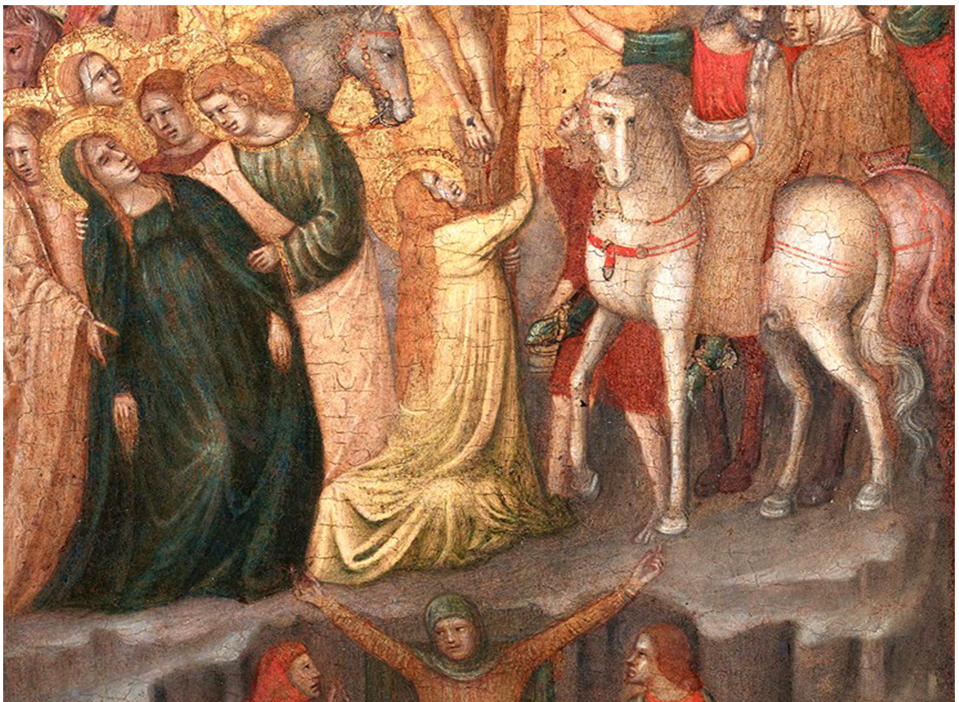Technique, materials and interventions
Giovanni Baronzio's Crucifixion
The technical examination of Giovanni Baronzio’s (also known as Giovanni da Rimini) Crucifixion, dated in the second quarter of the 14th century concentrated on: (1) the identification of the original materials and techniques, (2) the evaluation of the work’s state of preservation, and, (3) the integration of non-destructive analytical techniques to study its complex history of interventions.
The application of X-Ray Radiography (XRR), digital microscopy, Ultraviolet (UV) and Infrared (IR) imaging, Fiber-Optics Reflectance Spectroscopy (FORS), Fourier Transform Infrared Spectroscopy (FTIR) and X-Ray Fluorescence spectroscopy (XRF), Reflectance Transformation Imaging (RTI) provided a comprehensive technical study of the small in size painting (45,4 x 26,9). Results confirmed the consistency of original pigments with those used by Italian Renaissance artists on panel paintings: lead white, earth pigments, cinnabar, minium, carbon and iron black, copper green and blue, gold leaf as well as the use of the estofado technique (the artist scratches through a paint layer to reveal another layer of contrasting color or material). The wooden surface was prepared with a thick layer of calcite. Furthermore, results identified three major phases of intervention such as retouching and overpainting due to the deterioration of large areas of the original composition.


